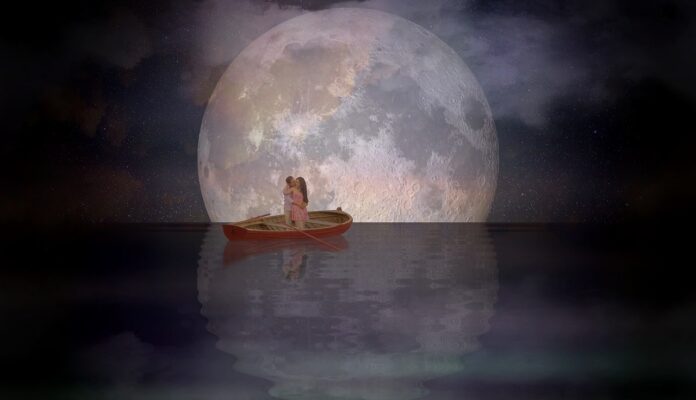Easy & Romantic Valentine’s Stargazing Guide From the RSPB
The RSPB Shop — UK’s largest nature conservation charity — wants to encourage everyone to brave the chill and embrace the great outdoors this winter. In aid of this, they’ve created a Valentine’s Day guide to stargazing, covering:
- Why it’s a great Valentine’s Day activity
- How to stargaze
- The equipment needed
- The planets, stars, and constellations you’re likely to see around Valentine’s Day
The full press release can be found below. Feel free to contact us if you need more information or if you have any questions or feedback.
Thanks so much,
Laura
For Immediate Release
Romance In The Stars: How To Stargaze This Valentine’s Day
The practice of stargazing has been present since the very beginning of the human race, and each of us has, at some point, experienced the enigmatic allure that even just a few minutes of gazing at the night sky can evoke.
From the ‘star-crossed lovers’ of Shakespeare’s Romeo and Juliet to the crooning swing of Dean Martin’s ‘That’s Amore’ — the night sky has inspired countless works of romance, and so it’s little wonder why stargazing has long been considered one of the most romantic activities around.
As Valentine’s Day approaches, the RSPB Shop has created a stargazing guide to help you plan the perfect date and make the most of a night spent under the stars.
1. Pick the perfect stargazing spot
You’re probably wondering what makes one spot superior to another when stargazing. There are a few factors at play here. The first? Light pollution. Try to get as far away from any major towns or cities, as the glow from these hubs will reduce even the brightest of stars to little more than feint dots. Stuck for ideas? A beach is a great option (and the sound of lapping waves will only add to the romantic vibe!). Some of the best spots in the UK include:
- Northumberland National Park
- Bodmin Moor, Cornwall
- The North Yorkshire Moors
- Exmoor National Park
Once you’ve picked your venue, it’s time to select a date. Obviously, Valentine’s Day itself is a preferable option, but it’s best to give yourself some leeway here. Choose a day with a clear forecast, and avoid any nights where the moon is full — this will lead to decreased star visibility.
2. Build your own stargazing kit
As with any adventure — romantic or otherwise — preparation is key. Before heading out into the night, consider the following:
Will you be warm enough? February is a cold month in the UK. Layer up with some comfortable, durable, and (above all) waterproof outdoor clothing. Take a picnic mat and a few blankets for sitting/lying on, and consider bringing an insulated mug, too. There’s nothing quite like enjoying a hot toddy together under a canvas of stars!
Do you have the right equipment? One of the best things about stargazing is that there’s no ticket for admission. That being said, by investing in a good pair of binoculars, you’ll be guaranteed the best seat in the house. Of course, if you’re just entering the world of binoculars and looking for a place to start a pair of entry-level binoculars will do just fine to identify popular stars and constellations. However, if you’re hoping to cosy up under the cosmos on a more regular basis and are keen to see the detail of the skies above, we’d recommend something more powerful, like these RSPB HD Compact binoculars.
Have you packed refreshments? It’s always a good idea to bring some food and drink items along with you for the trip (just remember to take your litter home with you!). Whether you pack a few snacks or prepare a full-blown picnic, any stargazing trip is sure to be enhanced with a selection of tasty treats.
Stargazing date night checklist:
- Warm, waterproof clothing
- Sturdy, durable footwear
- Hand warmers
- Torches and batteries
- Binoculars
- Compass
- Refreshments
- Insulated mug/flask
- Blanket/beach towel/picnic blanket
- A first-aid kit (in case of emergency)
3. Brush up on your star knowledge
Looking to really impress your date? By learning the names and stories behind the constellations beforehand, you’re sure to induce some star-struck swooning. Plus, learning about the history and mythology of the night sky is fascinating.
From the Greek myth surrounding the Cassiopeia, Cepheus, Pegasus, and Cetus constellations, to the true story of Coma Berenice (a group of stars named after Queen Berenice II of Egypt), space is loaded with fascinating tales. By brushing up on your constellations and their origins, you’ll wow your stargazing companion.
If you look north, can you see the Plough? This is one of the most recognisable constellations. If you’re looking south, keep an eye out for Cygnus the Swan. It looks like a huge cross and is one of the brightest constellations in the sky.
Not got the time to study the constellations beforehand? Pack a fold-out star chart as part of your stargazing kit. This way, both you and your date can share the learning experience and read the sky’s stories together.
What’s happening in the sky in February 2023?
- 31st Jan: The Moon and Mars will appear to come very close together in the sky (this is known as conjunction).
- 1st Feb: Comet ZTF makes its closest pass to the planet Earth. The next time this happens will be in around 50,000 years.
- 20th Feb: The perfect night for stargazing, as our moon will give off very little light (this is known as a new moon)
- 22nd Feb: Close encounter of the moon and Jupiter with Venus nearby
Important things to remember while stargazing
Busy planning your stargazing trip already? Before you head off into the night, remember the following:
- It’s important to respect your surroundings when you’re out and about in the countryside. Remember to respect local residents and landowners, act responsibly, and properly dispose of all litter.
- Ensure you have a fully-charged mobile phone with you, and map out your route ahead of time. Pack a first aid kit for emergencies.
- If this is your first date and you’ve yet to meet in person, be sure to choose a busier, less secluded area to stargaze in. Failing this, wait until you’re more familiar with each other. If you do decide to spend a night under the stars together, always make sure a friend or family member knows where you are, and what time they should expect you home.
- Always stick to designated paths, beware of unstable terrains, and steer clear of anywhere that looks like it might be unsafe. To minimise risk, get to your stargazing spot before night falls, and bring a torch for the walk back.
Credit to https://shopping.rspb.org.uk/ for providing the above post
Help keep news FREE for our readers
Supporting your local community newspaper/online news outlet is crucial now more than ever. If you believe in independent journalism, then consider making a valuable contribution by making a one-time or monthly donation. We operate in rural areas where providing unbiased news can be challenging. Read More About Supporting The West Wales Chronicle


























